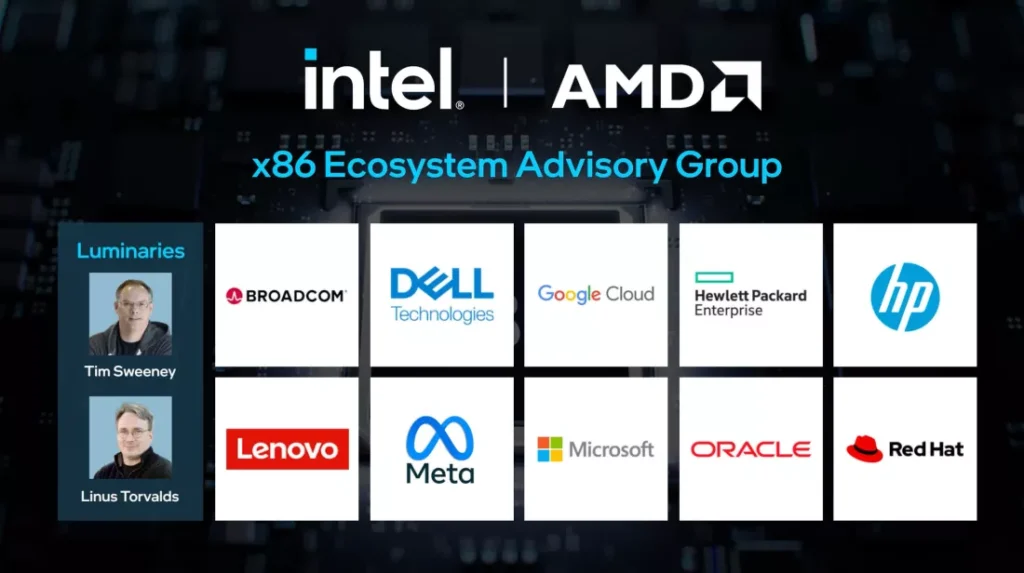Apparently AMD has blocking rights for any acquisition of Intel. If a deal were to happen, what would AMD ask for?

The x86 architecture has been the backbone of computing for decades, powering everything from personal computers to data centers. But what if, in a twist of fate, Intel—the company that birthed this architecture—were to face an unexpected takeover? Imagining such a scenario uncovers a fascinating interplay of technological, business, and regulatory complexities.
Here, we explore the x86 wish list: the challenges, opportunities, and potential chaos that would accompany an Intel takeover in the hypothetical world of tech.
1. The Legacy of x86: A Crown Jewel in Question
The x86 architecture is more than just a technical blueprint; it’s an institution. Intel’s dominance in this domain stems from decades of innovation and an intricate network of patents.
- Challenge: Any entity attempting a takeover must navigate an overwhelming volume of intellectual property, existing licensing agreements, and industry reliance on backward compatibility.
- Wish: An ideal scenario would ensure open licensing and compatibility across existing and future devices, preserving the architecture’s legacy.
2. Who Gets the Keys to the Castle?
Intel’s leadership in x86 is a result of not just the architecture but also the company’s ability to evolve it. From hyper-threading to efficient chipsets, Intel’s innovations have kept x86 relevant.
- Challenge: A new owner would need the technical expertise, R&D infrastructure, and vision to continue this evolution—or risk losing ground to ARM and RISC-V.
- Wish: A buyer with deep pockets, technical know-how, and respect for Intel’s engineering culture would be critical. Think a tech-savvy giant, not just a financial powerhouse.
3. Impact on the Semiconductor Ecosystem
A takeover of Intel would send shockwaves through the semiconductor industry. Intel is not just a CPU maker; it’s also a leading foundry, a pioneer in AI chips, and a key player in network infrastructure.
- Challenge: Balancing these diverse operations without disrupting global supply chains would be monumental. Competitors like AMD and NVIDIA could capitalize on any missteps.
- Wish: For the ecosystem’s stability, the new leadership would need to ensure continuity in production and collaboration while fostering competition.

4. Regulatory Hurdles: A Global Power Play
Intel operates across multiple regions, and its technology is deeply embedded in critical infrastructure. Governments worldwide would scrutinize any takeover for its implications on national security and technological independence.
- Challenge: Navigating regulatory frameworks in the U.S., EU, and China, especially in a politically charged semiconductor landscape, would be daunting.
- Wish: A transparent acquisition process that safeguards Intel’s strategic value while fostering innovation would be ideal.
5. What Happens to AMD and Others?
Intel’s fiercest competitor, AMD, has made significant strides with its Zen architecture, offering robust alternatives to x86 chips. A disrupted Intel could be a golden opportunity for AMD—or an existential threat if the new Intel owner aggressively outpaces competition.
- Challenge: Ensuring fair competition while avoiding monopolistic tendencies is critical for market health.
- Wish: The takeover should encourage innovation across the board rather than consolidating power to a single entity.
6. The Open Architecture Movement
Architectures like ARM and RISC-V have gained traction, thanks to their flexibility and openness. A poorly handled Intel takeover could accelerate the shift away from x86.
- Challenge: Convincing developers and manufacturers to stick with x86 amidst uncertainty would require strategic incentives.
- Wish: Embracing open standards or hybrid models could strengthen x86’s position in a diversified market.
7. A Future Beyond CPUs
Intel’s ambitions extend far beyond traditional CPUs, encompassing quantum computing, autonomous driving, and AI. A takeover would need to account for these future-facing ventures.
- Challenge: Balancing immediate profitability with long-term innovation is a delicate act.
- Wish: Continued investment in emerging technologies would solidify Intel’s relevance in a rapidly changing tech landscape.
Imagining the Outcome
While the idea of an Intel takeover might seem like a tech fantasy, it raises real-world questions about the interplay between innovation, competition, and global dependencies. Would such a move elevate x86 to unprecedented heights or plunge it into chaos?
For now, Intel’s leadership in x86 remains undisputed, but this thought experiment underscores the complexities of modern semiconductor dominance. The x86 wish list reflects a delicate balance of legacy preservation, competitive evolution, and bold innovation—elements that will shape the future of computing, with or without a takeover.